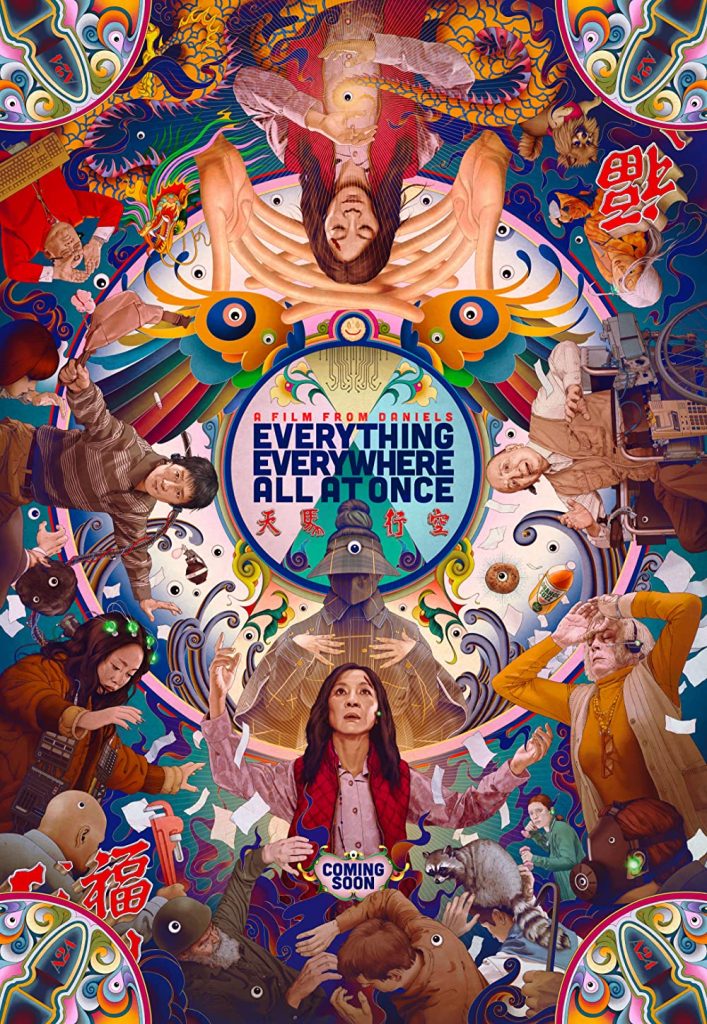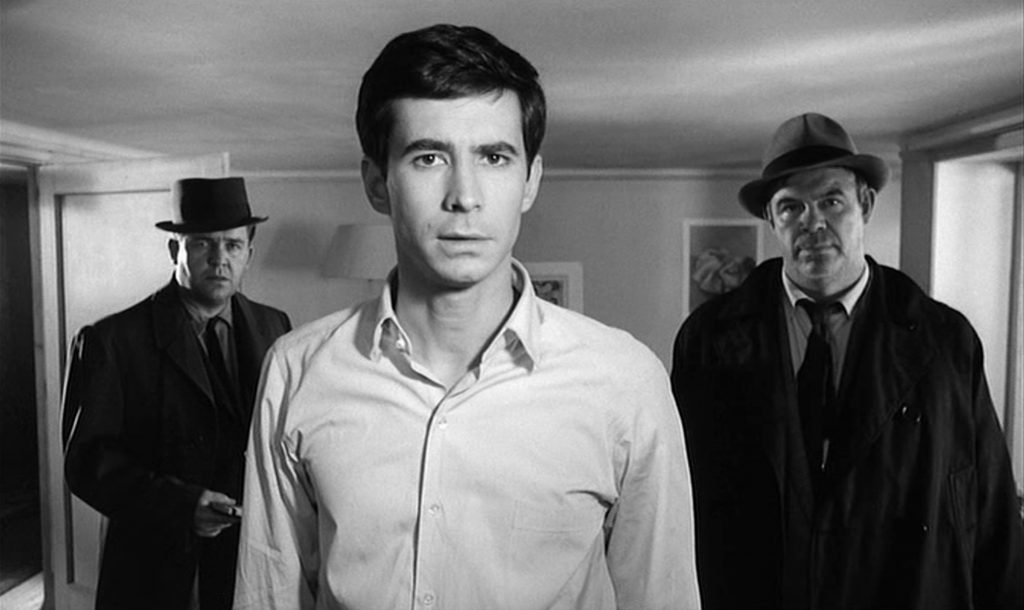This review contains spoilers, both for Everything Everywhere All At Once and Franz Kafka’s Trial. Read on at your own discretion.
Trainspotting. Groundhog Day. Kafka’s Trial, Anna Karenina, In The Mood For Love, and, quite apparently, also 2001. What do all of these things have in common? Everything Everywhere All At Once.

A film that is brimming with layers of meaning is not one that is easily described, let alone analyzed. Instead, it is one that teeters on the age of bombarding you until your prefrontal cortex almost collapses, just to pull you back in for another ride on an auto scooter made of discarded lobster shells at a French banquet table.
Everything Everywhere All At Once does exactly what its title promises. It tackles every major existential topic you could think of within a moment’s reach. Love? In shambles. Death? Omnipresent. Family trouble? Pervasive. Nihilism? Embraced and discarded. The many “what ifs?” that we can never stop ourselves from asking? They form the film’s very backbone, alongside the all-too-human struggle of existing in a world that has become too complicated for every individual in every possible universe and perhaps even beyond. All of these subjects – each of which could easily fill out a whole trilogy – are somehow addressed and interwoven into the movie’s three parts and 140 minutes. This poses a fairly important question that I could not help but wonder about as the story unfolded: Does Everything Everywhere bite off more than it can chew?
The answer is, of course, complicated. Not quite as complicated as the film’s dense narrative structure, but still fairly intricate. First, it must be noted that all the aforementioned “major” topics (life, love, death, family, nihilism, life decisions) are actually attempted to be addressed, as opposed to being just cursorily inserted. Giving all of them their due space is, quite frankly, impossible, and some might even argue that this inherent insurmountability lies at the very heart of the work.
Either way, all of these themes carefully intermingle to create a message that is both broadly life-affirming and manifold. And to hit home its point of showing how intricate and complex both human existence and the many dreary systems that we have created to shield ourselves from our constant looming existential dread are, Everything Everywhere has taken the approach of telling its story in the most convoluted method possible. In a way, that makes it the post-modern cinematic adaption of Kafka’s aforementioned Trial.

Kafka on Roids
Evelyn Quan Wang, our modern-day Chinese-American version of Josef K., is trapped in a horrifying and seemingly never-ending (mis)adventure spanning every imaginable universe. Just like K., every momentary solution becomes just another deviation in her quest to set things straight. And just like with following K., the tedious and meandering nature of the hero’s journey is representative of the arduous task of reading Kafka’s book or watching this film – although it is only fair to say that Wang’s odyssey is awfully exhilarating at many points, perhaps making her the hyperpop version of Josef K. instead.
Even the final climax of both artworks is similar: a unison of three characters in close physical interaction with each other. Leaving the Holy Trinity interpretations to theologians and Toni Morrison experts, this is also where the two works of art diverge the most: Josef K.’s story ends in inevitable failure and downfall at the hands of his two impromptu adversaries, while for Evelyn, the bonding with her two closest family members is what reassures her to choose life, a job, a career, a family, maybe not a fucking big television, but, most certainly, washing machines.
Much more can be said about Everything Everywhere: about its take on multiverse theory, its fantastic balance of mixing entertainment, arthouse, and Asian representation, or its rethinking of cinematic clichés. But perhaps that is the true quintessence we are dealing with here: We can never catch more than a flicker of the big whole and what it is trying to convey. Instead, we must go through the many detours and reiterations – some of which are magnificent and others rather dull – to reach some fairly straightforward conclusions.
In The Trial, there is an almost slapstick-like scene: A bureaucrat throws an endless wave of advocates trying to reach the court building from a staircase until he finally grows tired and they get inside. Evelyn also finds herself under constant assault as the world around her collapses time and time again. The difference is that she perseveres – because she finally found a reason to.
8/10
stay gold ponyboy
